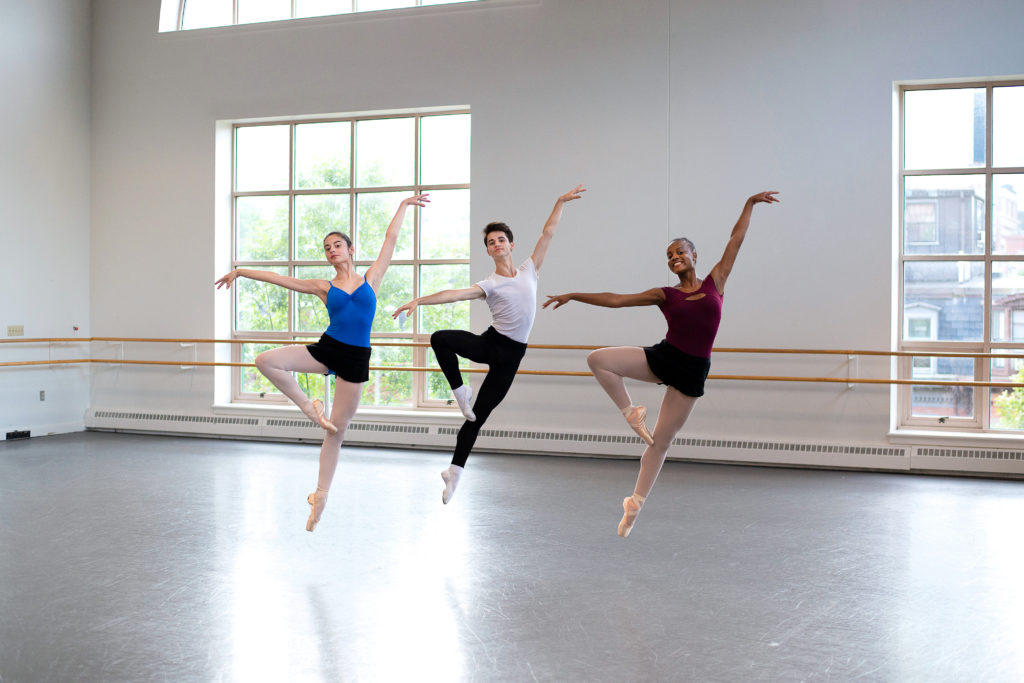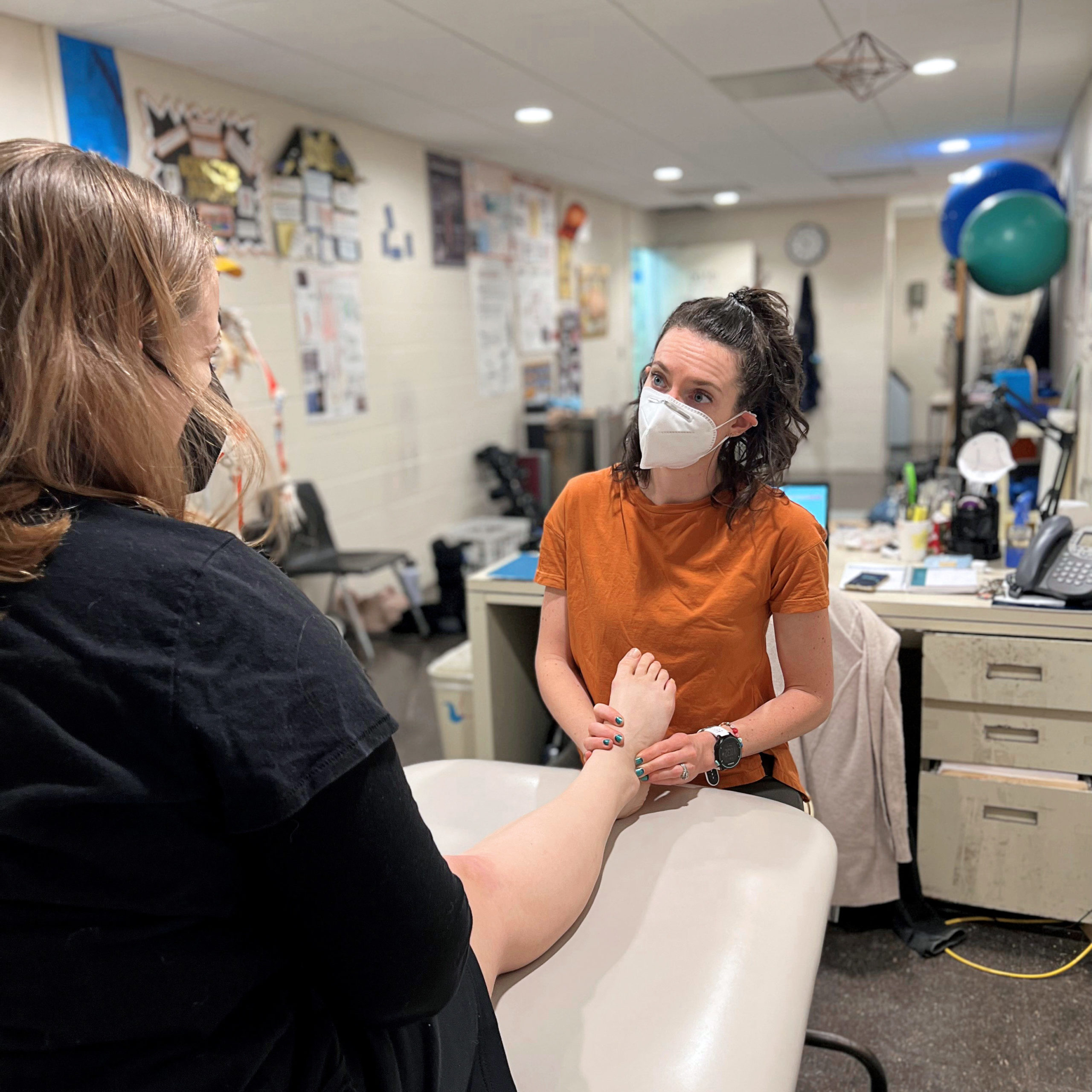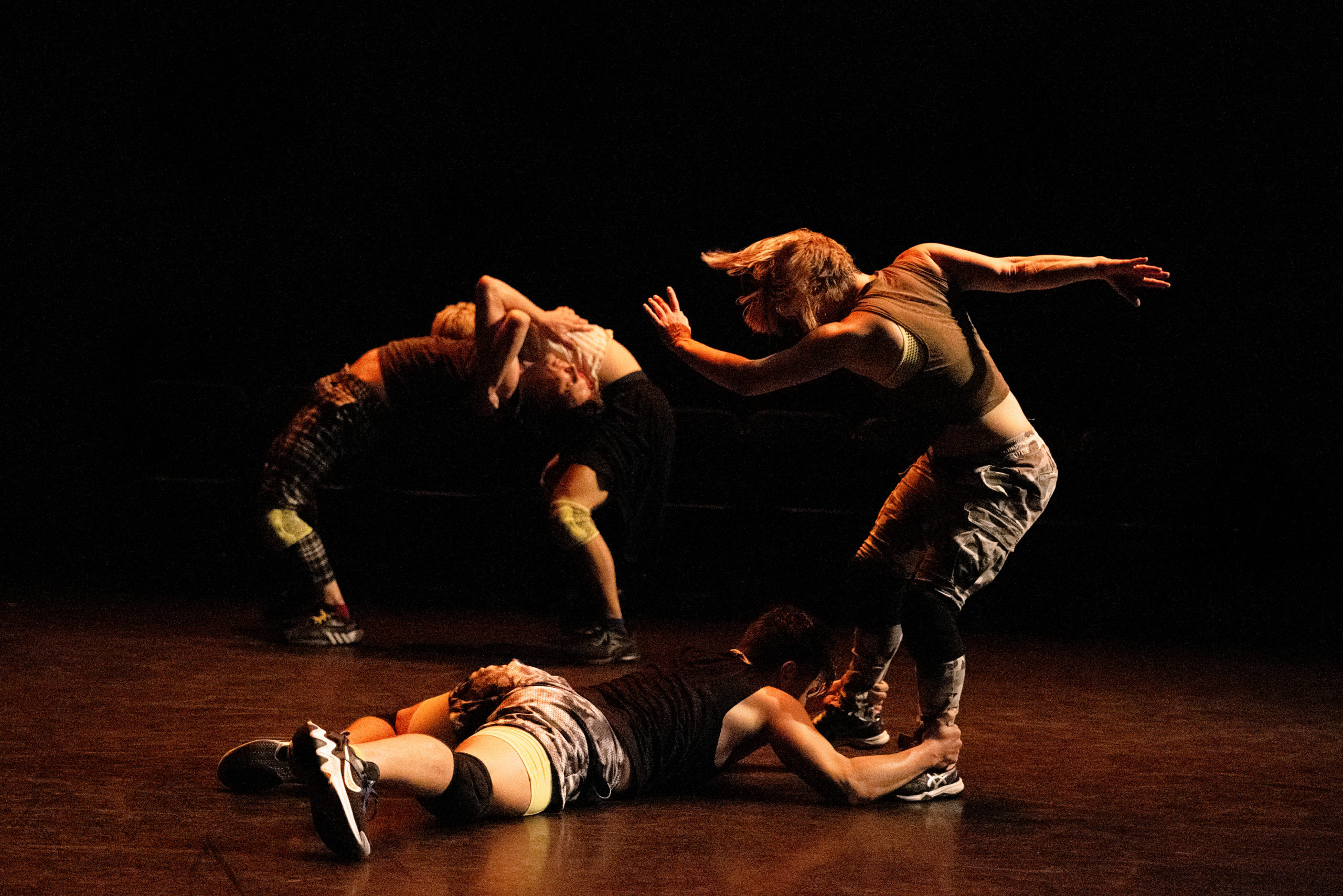4 Tips for Traveling Further and More Powerfully Through Space
The dancers in Abby Zbikowski’s Abby Z and the New Utility company travel across the stage with such force, such explosive power, that it feels miraculous when they’re able to stop short before crashing into each other or an audience member.
Zbikowski’s thrilling, highly athletic style is unique. But the need for dancers to be able to explode across the stage—to “eat up the space,” as some teachers say—is not. Even in dance forms with a focus on elegance or lightness, being able to travel further, and thus take up more space, can result in more- exciting, more-dynamic performances.
But “eating up the space” can present psychological challenges—sometimes asking dancers to reject socialization that has encouraged them to take up less space—as well as physical ones.
Change Your Mindset
If you’ve often been told to dance bigger, or if you struggle to keep up with the group during traveling movement, it may be worth looking inward and interrogating the way you’ve been trained. The world at large teaches women and other marginalized identities to take up less space, says Zbikowski, and traditional studio culture often doesn’t address this in a way that would empower dancers to take up more. She says she often encounters students in her classes at The Ohio State University who have fear about moving with power and explosiveness, or have a psychological block. “You’re up against this pretty picture of what people think dance is,” she says. “And that sometimes locks people in their bodies.”
Internalizing the idea that, as Zbikowski says, “everybody has the right to take up as much space as they can in a dance studio” is not as simple as flipping a switch. Know that, like any new way of moving, this may feel unnatural at first, but that doesn’t mean it’s wrong, she says.
Use the Floor
In order to travel powerfully through space, dancers need to feel connected to the floor, so they can really push off of it, says Ivalyo Alexiev, a faculty member at Boston Ballet School. During his own dance career, Alexiev found that taking barre in socks helped him understand the relationship of his feet to the floor, and he recommends that dancers who typically dance in shoes experience the floor in this way during barre, if they are seeking more groundedness. Zbikowski agrees that using the floor is key to explosive movement, in any style: “The ground will help you get to where you need to be, whether it’s up or down or out or in,” she says. “It’s what connects us all.”

Channel Athleticism
For many dancers, one challenge lies in being able to tear through space while also maintaining the technique and artistry that the choreography demands. Zbikowski, whose approach is focused more on functionality and sensation than on making shapes, suggests that dancers tap into their power by (at least temporarily) allowing themselves to not care about what their movement looks like. To her, “dancer or athlete” is not a binary choice, and she encourages dancers not to put up a wall between dance technique and other types of movement. She helps her students channel athleticism through an “offense/defense” exercise, in which dancers partner up and “defend their space” without touching. “You’re not allowed to let your partner get by you,” she says. “So in order to make those quick breakaways, you need to drop your weight into the floor and leverage it in a specific direction. Putting people in these kinds of scenarios lets the body break out of certain strict regimens and discover things for itself.”
Short Dancers, Fret Not
Petite dancers, or dancers with short legs, may feel like they are at a disadvantage when it comes to traveling far and fast. But this isn’t necessarily the case, says athletic trainer Lauren McIntyre. Short dancers actually have potential advantages, she says, like having a lower center of gravity and the ability to turn over their stride faster.
Build Power
Here’s how to prime your body for explosive movement, according to athletic trainer Lauren McIntyre, who works with dancers at NYU Langone Health’s Harkness Center for Dance Injuries

Fuel smart. In order to explode into space, your body needs to have carbohydrates available to energize that movement, says McIntyre, who cautions that low-carb diets likely won’t aid dancers in developing more power.
Train for power. Keep in mind that endurance training, strength training and power training are different, says McIntyre, and that most of the cross-training dancers are already doing is most likely more geared towards the former two. Plyometrics and HIIT can be useful for building power, she says, as can lifting heavy weights to build muscle. She also recommends using slightly lighter weights—about 30 percent of your maximum load—but performing faster reps, especially during the concentric part of the action (for example, the “up” part of a weighted squat). Before increasing load or speed, ensure you are confident in your form.
Rest up. Tired, overworked muscles will struggle to move explosively, says McIntyre, who cites a study showing that as fatigue increases, velocity decreases. This can be tricky for dancers with demanding schedules, especially if they are incorporating cross-training like plyometrics, which can be key for building power but demands proper recovery time in order to reap the benefits. She suggests that if dancers add cross-training to their routine, they look at their schedule as a whole and consider where they can build in rest—even if it means one less dance class per week.
Tailor your warm-up. When performing choreography featuring big, explosive movement—especially when that movement comes at the beginning of the piece—make sure your warm-up involves activating the fast-twitch muscle fibers you’ll need. In addition to dynamic stretching, foam rolling and getting your heart rate up, McIntyre recommends doing plyometric drills—like butt kicks, high knees or jumping jacks—to “rev your engine,” she says. “It’s about getting that metabolic pathway activated.”




